博文
[转载]亮点文章 | 铁磁性Kagome金属Fe3Sn2中的巨拓扑霍尔效应
||
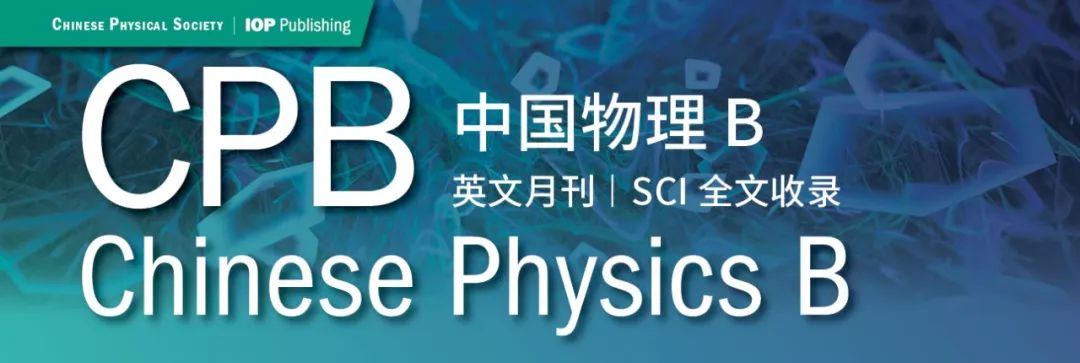 亮点文章
亮点文章
铁磁性Kagome金属Fe3Sn2中的巨拓扑霍尔效应
第一作者 | 王琦
通讯作者 | 雷和畅
研究亮点
本文研究发现Fe3Sn2表现出巨拓扑霍尔效应,而这一效应可能是由于场诱导的斯格明子态和非线性自旋结构共同导致的。
研究背景
在非共面自旋构型中,来源于实空间标量自旋手性χijk = Si·(Sj × Sk)的贝利相位可以产生一个虚拟磁场,从而产生拓扑霍尔效应(topological Hall effect,THE)。拓扑霍尔效应通常可在具有磁性斯格明子的金属磁体中观察到。最近,在阻挫磁体中也观察到了拓扑霍尔效应。同时,实验和理论研究表明磁性斯格明子也可以在一个中心对称晶格中通过磁阻挫稳定存在。阻挫Kagome晶格铁磁体Fe3Sn2近年来引起了人们的广泛关注。在居里温度TC(641 K)以下,单晶Fe3Sn2表现出巨大的反常霍尔效应。此外,角分辨光电子谱研究证实了massive Dirac费米子和平带的存在。而洛伦兹透射电子显微镜的研究观察到了在100 K以上的宽温度范围内存在斯格明子的磁泡结构。另外还发现,Fe磁矩从c轴偏转到ab平面内的过程中存在非共线磁性结构。这些研究结果激发我们对Fe3Sn2中的拓扑霍尔效应开展详细研究。
研究方法及结果
本工作发现,Fe3Sn2在低场区表现出巨大的拓扑霍尔效应,在温度300 K和磁场0.76 T时,最大拓扑霍尔电阻率约为2.01 μΩ·cm。当磁场大于1.3 T时,当Fe磁矩完全极化,此时拓扑霍尔效应消失。详细分析表明,这可能与场诱导的斯格明子态和非线性自旋构型有关。
研究意义或前景
本工作不仅加深了我们对阻挫磁性体系和拓扑霍尔效应的理解,而且为探索新型具有奇异物理性质的磁性阻挫材料提供了新思路。
文章来源
Giant topological Hall effect of ferromagnetic kagome metal Fe3Sn2
Qi Wang(王琦), Qiangwei Yin(殷蔷薇), Hechang Lei(雷和畅)
Department of Physics and Beijing Key Laboratory of Opto-electronic Functional Materials&Micro-nano Devices, Renmin University of China, Beijing 100872, China
Keywords: topological Hall effect, skyrmion state, non-collinear spin configuration
We present the experiment observation of a giant topological Hall effect (THE) in a frustrated kagome bilayer magnet Fe3Sn2. The negative topologically Hall resistivity appears when the field is below 1.3 T and it increases with increasing temperature up to 300 K. Its maximum absolute value reaches ~2.01 μΩ·cm at 300 K and 0.76 T. The origins of the observed giant THE can be attributed to the coexistence of the field-induced skyrmion state and the non-collinear spin configuration, possibly related to the magnetic frustration interaction in Fe3Sn2.

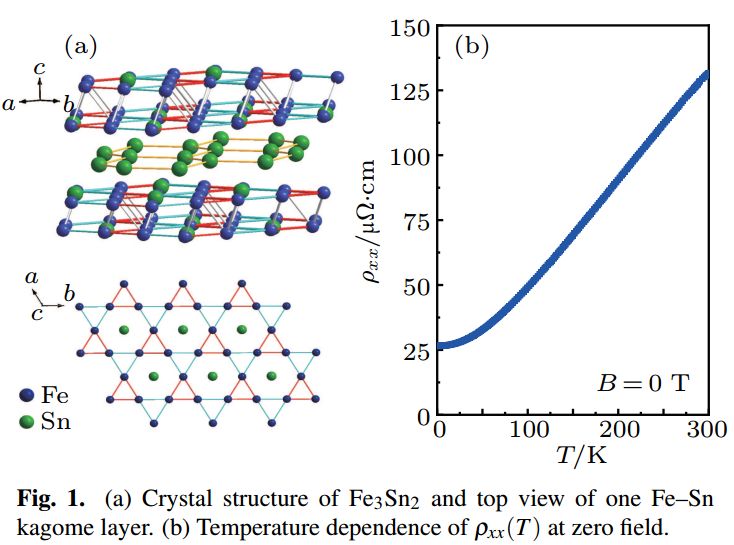
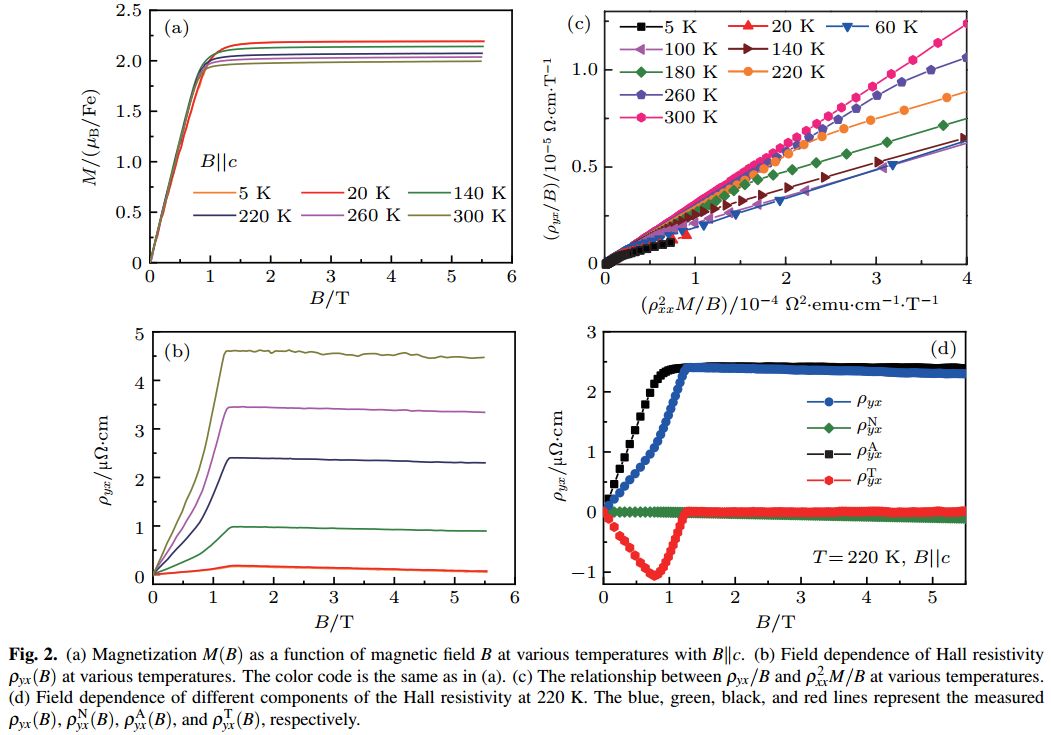
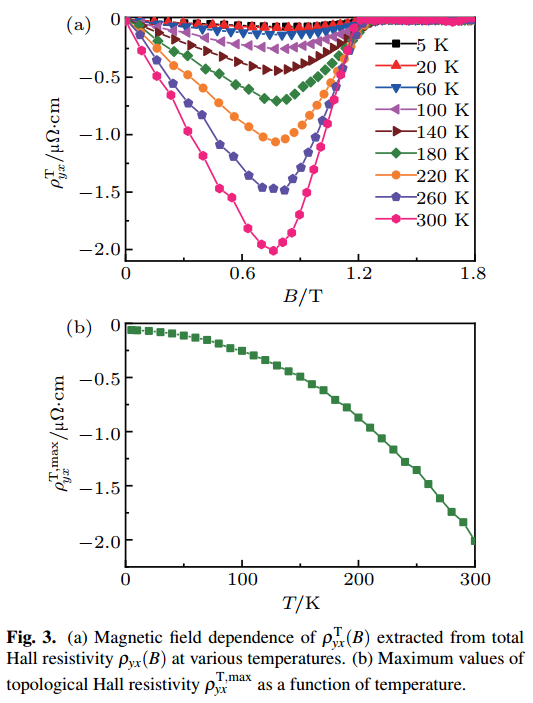
CPB专题推荐
SPECIAL TOPIC — A celebration of the 100th birthday of Kun Huang
TOPICAL REVIEW — A celebration of the 100th birthday of Kun Huang
SPECIAL TOPIC — Strong-field atomic and molecular physics
TOPICAL REVIEW — Strong-field atomic and molecular physics
TOPICAL REVIEW — Topological semimetals
TOPICAL REVIEW — New generation solar cells
TOPICAL REVIEW — Recent advances in thermoelectric materials and devices
SPECIAL TOPIC — Amorphous physics and materials
TOPICAL REVIEW — Soft matter and biological physics
SPECIAL TOPIC — Nanophotonics
SPECIAL TOPIC — Photodetector: Materials, physics, and applications
SPECIAL TOPIC — Topological semimetals
TOPICAL REVIEW — Photodetector: Materials, physics, and applications
TOPICAL REVIEW — Nanolasers
TOPICAL REVIEW — Physics research in materials genome
TOPICAL REVIEW — Fundamental research under high magnetic fields
SPECIAL TOPIC — 80th Anniversary of Northwestern Polytechnical University (NPU)
TOPICAL REVIEW — Spin manipulation in solids
TOPICAL REVIEW — Nanophotonics
TOPICAL REVIEW — SECUF: Breakthroughs and opportunities for the research of physical science
TOPICAL REVIEW — Electron microscopy methods for emergent materials and life sciences
SPECIAL TOPIC — Recent advances in thermoelectric materials and devices
TOPICAL REVIEW — Thermal and thermoelectric properties of nano materials
TOPICAL REVIEW — Solid-state quantum information processing
SPECIAL TOPIC — New generation solar cells
SPECIAL TOPIC — Soft matter and biological physics
Virtual Special Topic — High temperature superconductivity
Virtual Special Topic — Magnetism
TOPICAL REVIEW — ZnO-related materials and devices
TOPICAL REVIEW — Topological electronic states
TOPICAL REVIEW — 2D materials: physics and device applications
TOPICAL REVIEW — Amorphous physics and materials
TOPICAL REVIEW — High pressure physics
TOPICAL REVIEW — Low-dimensional complex oxide structures
TOPICAL REVIEW — Fundamental physics research in lithium batteries
TOPICAL REVIEW — Interface-induced high temperature superconductivity
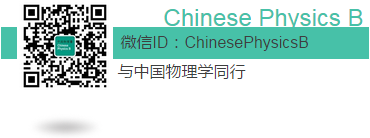
https://wap.sciencenet.cn/blog-3377544-1233751.html
上一篇:[转载]亮点文章 | 基于MP2+ΔCCSD(T)方法检验DFT范德华力方法PBE+D3和SCAN+rVV10的准确性
下一篇:[转载]CPB2020年第2期编辑推荐文章